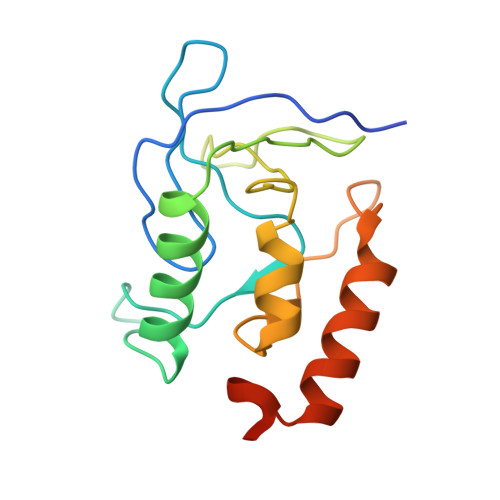X-ray crystal structures of staphylococcal nuclease complexed with the competitive inhibitor cobalt(II) and nucleotide.
Loll, P.J., Quirk, S., Lattman, E.E., Garavito, R.M.(1995) Biochemistry 34: 4316-4324
- PubMed: 7703245
- DOI: https://doi.org/10.1021/bi00013a021
- Primary Citation of Related Structures:
1STG, 1STH - PubMed Abstract:
Two crystal structures of ternary complexes of staphylococcal nuclease, cobalt(II), and the mononucleotide pdTp are reported. The first has been refined at 1.7 A to a crystallographic R value of 0.198; the second, determined from a crystal soaked for 9 months in a slightly different mother liquor than the first crystal, has been refined at 1.85 A to an R value of 0.174. In the first structure, the cobalt ion is displaced 1.94 A from the normal calcium position, and the active site is dominated by a salt bridge between Asp-21 and Lys-70 from a symmetry-related molecule in the crystal lattice. The Co2+ ion appears unable to displace this lysine; consequently, the metal is bound in a vestibular site adjacent to the calcium site. The metal-binding pocket in the second structure adopts a configuration similar to that of the calcium complex, with the cobalt ion binding only 0.36 A from the calcium position. However, an inner sphere water seen in the calcium structure is missing from this structure. The cobalt ion in the second structure appears to be loosely or transiently coordinated within the calcium binding pocket, as evidenced by the high value of its refined thermal factor. Loss of catalytic activity for cobalt(II)-substituted nuclease is perhaps due to its inability to bind this inner sphere water.
Organizational Affiliation:
Department of Biochemistry and Molecular Biology, University of Chicago, Illinois 60637, USA.
















